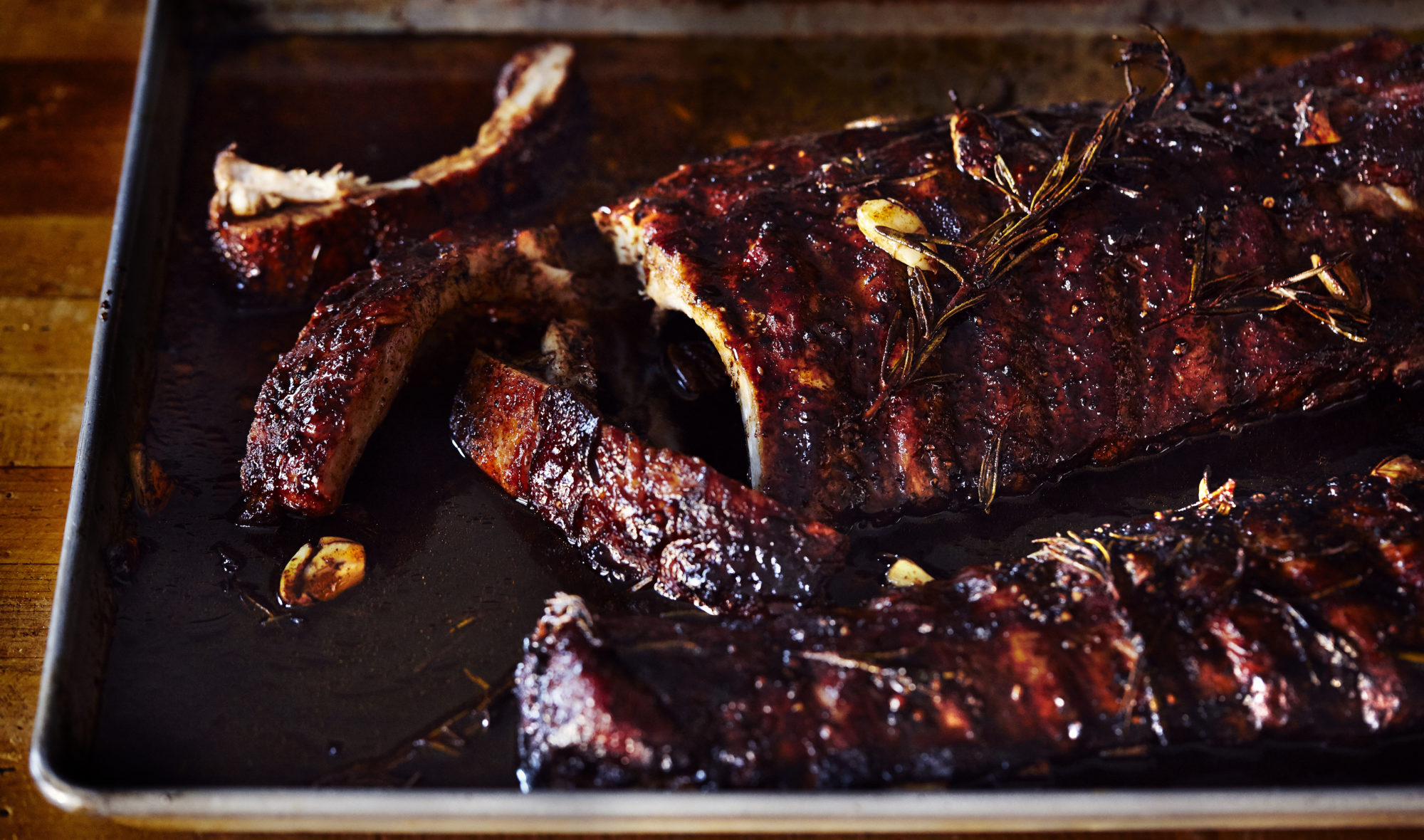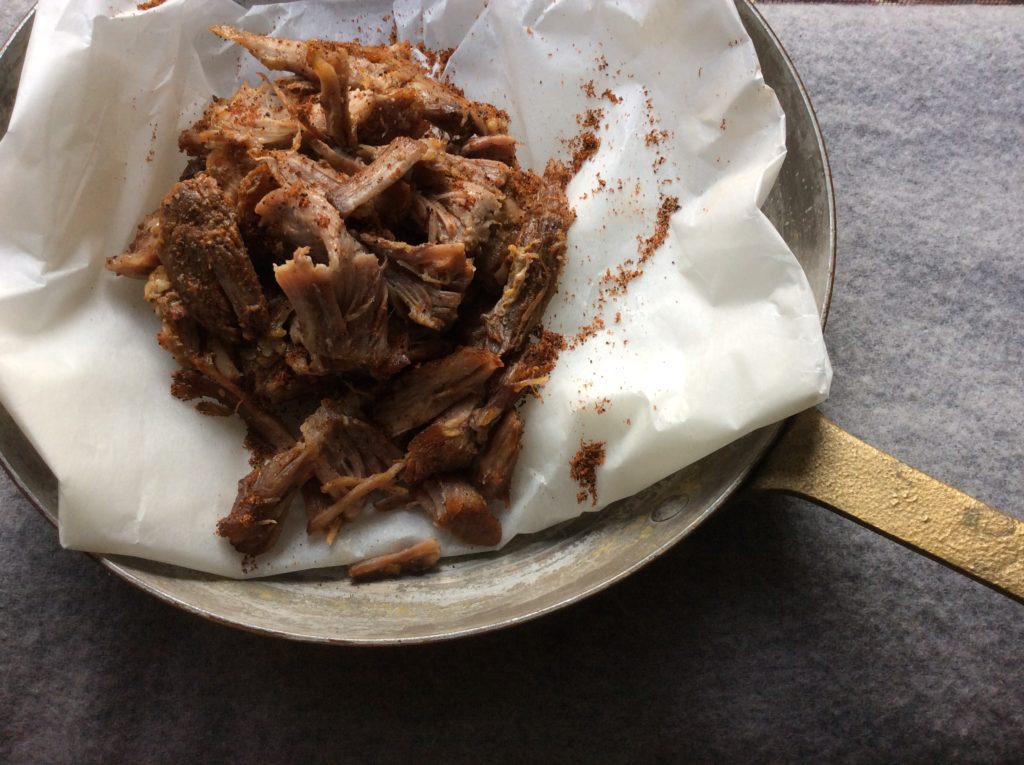
📣 PN Level 2 NOW OPEN: Get better client retention, results, and referrals. Save 44% + BONUS this week.

📣 PN Level 2 NOW OPEN: Get better client retention, results, and referrals. Save 44% + BONUS this week.

Pork meat, which comes from the domesticated pig, is the most widely consumed meat in the world. Pork comes in a huge variety of cuts, preparations, and dishes. Processed pork products (such as bacon, sausage, and ham) and common cuts such as chops and ribs are just the beginning. Get to know pork and you will uncover all kinds of options. Pork meat can be lean or fat; boneless or bone-in. Nutritional content varies, but in general you can expect pork to offer plenty of protein, as well as iron, B vitamins, zinc, and selenium. While cooking methods vary, pork is a great option when cooking on the grill. Roasting or sear-roasting are other great options.
Pork meat comes from the domesticated pig, and is eaten worldwide in a variety of cuts, preparations and dishes. It is the most widely consumed meat in the world.
In the US and Canada, common cuts of pork come from the loin, leg, side/belly, ribs, and shoulder. Other parts of the animal – such as hock, head, trotters, intestines, and fatback – can be found in certain preparations but are generally less common.
Pork meat in its processed form includes bacon, sausages and hot dogs, ham, and various kinds of deli meats.
A typical grocery store may offer pork loin, often as “chops” (boneless or bone-in), or as tenderloin, ground pork, and back and/or side ribs, as well as the usual processed options. Ground pork is also often available. Other cuts such as pork belly may be available through a butcher.
Raw pork meat is usually pink and may contain some streaky or layered fat, depending on the cut. Fresh, raw pork should have a bright, clean look to it.
Cooked pork tenderloin looks white with just a hint of pink: pinkness is a sign of rawness. So, for example, a cooked pork chop should no longer look bright pink in the center.
Pork can also look brown or grey when cooked depending on the cut and cooking method.
There are many different cuts of pork, and the nutritional content varies greatly with each. As a typical example, this is the nutritional value of a bone-in, center loin chop (raw):
One pork chop (weighing 3 ounces) contains 144 calories, 17.60 grams of protein, and 7.68 grams of fat.
Pork is an excellent source of iron, B vitamins, zinc, and selenium.
As with all meat, fresh is best. Buy from a trusted butcher when you can. (Tip: a good butcher will help you pick out different cuts of meat and may be able to tell you the best ways to prepare and cook those cuts).
Here are some other things to consider when selecting meat:
Pork should be stored in the refrigerator and cooked before its expiry date. If you’ve purchased meat from a butcher and it’s wrapped in paper but not thoroughly sealed you may want to put the package in a sealable freezer bag to keep it fresh.
If you won’t be eating the meat within a couple days (or before the expiry date), you can freeze it to extend its lifespan. Generally, meat in the freezer will be good for a couple of months. Make sure it is wrapped in a tightly sealed heavy-duty freezer bag to avoid freezer burn.
Once cooked, pork will last about 4-5 days in a sealed container in the fridge.
Remember that frozen meat, once defrosted, cannot be refrozen.
Pork preparation depends greatly on the cut, the recipe, and your personal preference.
Pork roasts (such as a whole tenderloin) are usually best roasted in the oven.
Individual cuts, such as pork chops, are ideal for sear-roasting: to do this, heat a cast iron or similarly heat-resistant pan to medium-high with a small amount of olive oil, vegetable oil, or coconut oil. Once hot, carefully place the chops in the pan. Leave until seared (about 2-3 minutes). Then, carefully flip each chop and sear on the other side (another couple of minutes.) Meanwhile, heat the oven to 425°F. Once the chops are seared on both sides, move the pan to the oven and continue cooking until done. (The time required will depend on the thickness of your chops – if you like, an instant read thermometer can help you out with this.)
Alternatively you can cook the chops entirely in a pan, but the sear-roasting method is a great way to ensure a juicy and tender chop with a nicely seared crust.
The grill is another great way to cook pork: chops, tenderloin, ribs, sausages and even bacon can be cooked on the grill to delicious results.
Processed pork products which are already cured or smoked (such as ham) can simply be cooked or reheated according to package instructions.
A note about safety: The USDA recommends cooking pork until 145°F for safety reasons. When preparing meat, remember to wash your hands and all other cooking surfaces and utensils after they have touched raw meat.

Get ready to invite some friends over for this crowd-pleaser of a recipe! Easy and economical, the leftovers can be portioned out and used in salads or lettuce wraps throughout the week. Ask for a boston butt cut from your local butcher.
Prep Time: 35 minutes Cook Time: 480 minutes Yield: 8-10 servings
Begin by preparing the brine. To do so, combine water, salt, maple syrup, herbs, and peppercorns in a pot and bring to a simmer.
Smash the garlic, skins and all, and toss into the pot. Stir every few minutes until the salt is dissolved. Set aside to cool. (The easiest, most efficient way to do this is to place the entire pot into an ice bath in your kitchen sink.)
Stir the brine every few minutes, this will help it cool more quickly.
As the brine cools, clean up the pork by removing any excess visible fat, skin, and glands. Place the pork in a large leakproof rubbermaid container and pour the chilled brine carefully over the meat, making sure that it’s fully submerged. Cover and refrigerate overnight, ideally for 12 hours.
The next day, pull the pork out of the brine and pat it dry with lots of paper towel.
Strain the used brine; dispose of the solids and pour the liquid down the sink.
Preheat oven to 225°F.
To make the dry rub, combine the spices in a small bowl and, using your hands, massage the pork with the rub, using all of the rub to cover the meat. Move the pork to a parchment-lined roasting pan, cover tightly with foil, and place on the bottom rack of the oven. Double check your oven temperature, and let cook, undisturbed, for 5 hours.
Carefully remove the foil, (keep it intact) rotate the pan, and cook uncovered for another 4-5 hours, checking every hour and a half. The pork is ready when the bone can slide effortlessly away from the meat.
Carefully set the roasting pan on the stovetop, turn off the oven and let rest for 2 hours tenting with the old foil. When the pork is cool enough to handle, maneuver it to another container and pour the juice from the pan into a small saucepan. Skim the excess fat off the surface with a ladle, add the Worcestershire, maple syrup, salt, vinegar, and reduce over medium heat until desired thickness is achieved.
Pour the sauce over the pork and serve.
Keep leftovers in the fridge.
Enjoy!
Precision Nutrition’s Encyclopedia of Food expands every single month as we highlight new foods and showcase beautiful food photography. If you’d like to stay up to date, simply click this link. From there, we’ll send you a FREE copy of our recipe book. We’ll also let you know when new and delicious foods are added to the site.
Pork meat, which comes from the domesticated pig, is the most widely consumed meat in the world. Pork comes in a huge variety of cuts, preparations, and dishes. Processed pork products (such as bacon, sausage, and ham) and common cuts such as chops and ribs are just the beginning. Get to know pork and you will uncover all kinds of options. Pork meat can be lean or fat; boneless or bone-in. Nutritional content varies, but in general you can expect pork to offer plenty of protein, as well as iron, B vitamins, zinc, and selenium. While cooking methods vary, pork is a great option when cooking on the grill. Roasting or sear-roasting are other great options.